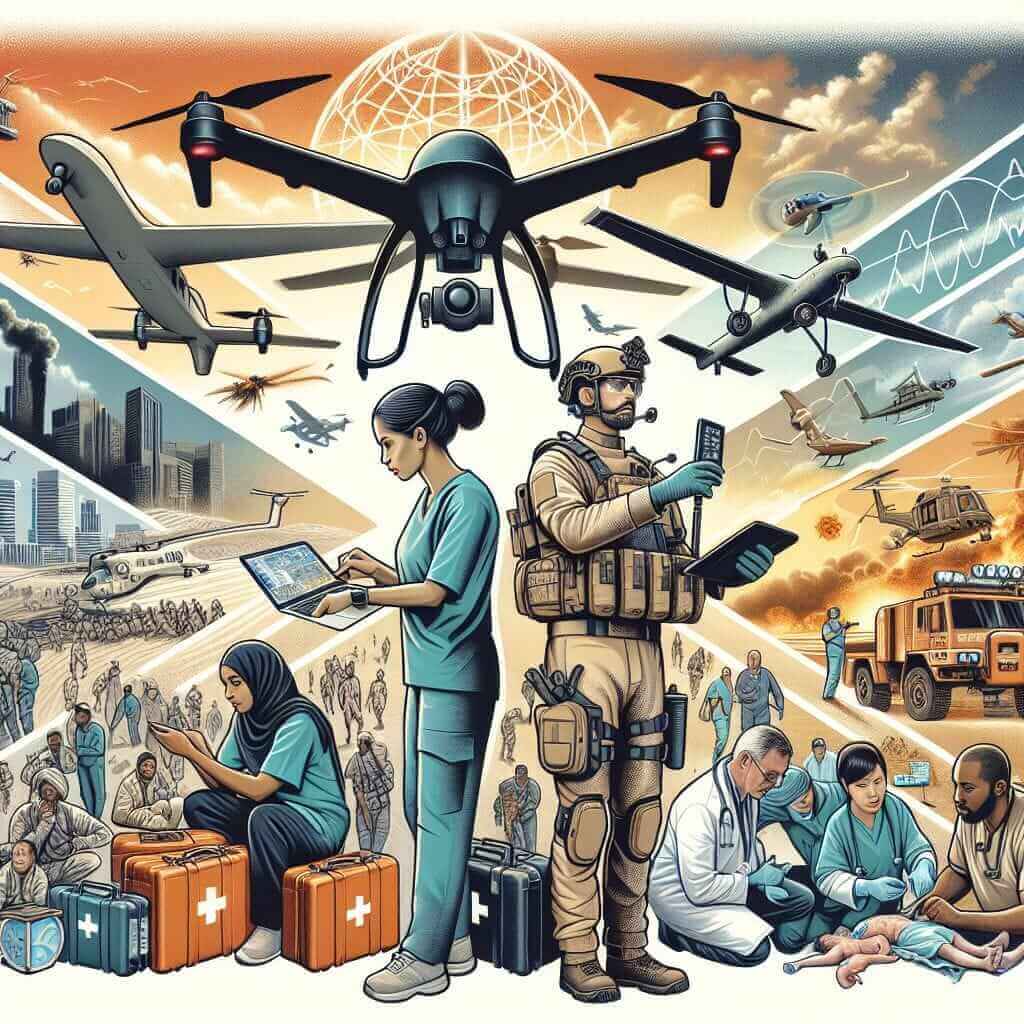When preparing for the IELTS Writing Task 2, it is crucial to encounter a variety of topics, including those related to technology and disaster response. In this article, we will delve into “The role of technology in disaster response”, offering insights, a sample essay, and essential tips to excel in this task.
Understanding the Topic
The role of technology in disaster response is a significant topic that has emerged in recent years due to the increasing frequency and severity of natural disasters. This topic explores how technological advancements aid in mitigating the effects of disasters, facilitating relief operations, and ensuring efficient recovery. It is vital for IELTS candidates to comprehend the scope and nuances of this subject to craft an effective and well-informed essay.
Possible Essay Prompts
- Discuss the advantages and disadvantages of using technology in disaster response.
- To what extent do you agree or disagree that technology has improved disaster response efficiency?
- How has technology changed the way governments and organizations respond to natural disasters?
In this article, we will choose the second prompt to develop a comprehensive sample essay.
Analyzing the Essay Prompt
“To what extent do you agree or disagree that technology has improved disaster response efficiency?”
Task Requirements:
- Opinion-based: This prompt asks for your opinion on the extent to which you believe technology has enhanced disaster response efficiency.
- Balanced Approach: You can wholly agree, partly agree, or entirely disagree, but you must support your stance with arguments and examples.
- Structured: Your essay should have a clear introduction, body paragraphs with well-developed arguments, and a conclusion.
Sample Essay
Introduction
Technological advancements have revolutionized many aspects of human life, including disaster response. Some people assert that technology has significantly improved the efficiency of disaster response operations, while others believe it has introduced new challenges. This essay will argue that the benefits of technology in disaster response far outweigh any potential drawbacks, thereby significantly enhancing efficiency.
Body Paragraph 1
One of the primary advantages of technology in disaster response is the real-time communication it facilitates. Modern communication tools such as satellite phones, GPS, and mobile networks enable quick dissemination of information, which is crucial during emergencies. For instance, during the 2010 Haiti earthquake, social media platforms like Twitter and Facebook were used to coordinate rescue efforts and provide real-time updates, thereby saving countless lives.
Body Paragraph 2
Another critical benefit is the use of advanced technology for disaster prediction and early warning systems. Technologies such as seismic sensors, weather forecasting models, and artificial intelligence can predict natural disasters with higher accuracy, allowing authorities to take preemptive measures. Early warnings of tsunamis, hurricanes, and floods have proven instrumental in evacuating at-risk populations and minimizing casualties, as evidenced by the improved response to cyclones in countries like Bangladesh.
Body Paragraph 3
Moreover, technology has enhanced the logistical aspects of disaster response. Drones and robotics are employed to assess damage, deliver supplies, and conduct search and rescue operations in hazardous areas where human access is limited. For example, drones were extensively used in the aftermath of Hurricane Harvey in the United States to survey flood-affected regions and direct rescue teams to stranded individuals efficiently.

Counterargument
While it is true that technological dependency can create vulnerabilities, such as power outages and cybersecurity threats, these can be mitigated through robust backup systems and stringent security protocols. The overall benefits, including faster coordination, better resource allocation, and improved safety, significantly outweigh these drawbacks.
Conclusion
In conclusion, technology has undeniably improved the efficiency of disaster response. From facilitating real-time communication and early warning systems to enhancing logistical operations, the advantages are manifold. Despite some potential challenges, the positive impact of technology in saving lives and aiding recovery efforts makes it an indispensable tool in modern disaster response.
(Word Count: 357)
Tips for Writing the Essay
- Introduction: Clearly state your position on the topic.
- Body Paragraphs: Provide specific examples and evidence to support your arguments.
- Counterargument: Acknowledge and refute opposing views to strengthen your position.
- Conclusion: Summarize your main points and restate your opinion in a compelling manner.
Key Vocabulary and Expressions
- Mitigate (verb) – /ˈmɪt.ɪ.ɡeɪt/: to make less severe.
- Facilitate (verb) – /fəˈsɪl.ɪ.teɪt/: to make an action or process easier.
- Dissemination (noun) – /dɪˌsem.ɪˈneɪ.ʃən/: the act of spreading information.
- Evacuate (verb) – /ɪˈvæk.ju.eɪt/: to remove people from a dangerous place.
- Logistics (noun) – /ləˈdʒɪs.tɪks/: the detailed coordination of a complex operation.
- Hazardous (adj) – /ˈhæz.ə.dəs/: dangerous.
- Preemptive (adj) – /priˈemp.tɪv/: taken as a measure against something anticipated.
- Robust (adj) – /rəˈbʌst/: strong and effective.
- Instrumental (adj) – /ˌɪn.strəˈmen.təl/: serving as a means of pursuing an aim or policy.
- Seismic (adj) – /ˈsaɪz.mɪk/: relating to earthquakes or other vibrations of the earth.
Conclusion
Mastering the topic of “The role of technology in disaster response” can significantly enhance your ability to handle diverse essay prompts in IELTS Writing Task 2. By understanding the topic, structuring your essay effectively, and using relevant vocabulary, you can craft a high-scoring essay. Continue practicing with related topics to build confidence and improve your writing skills.